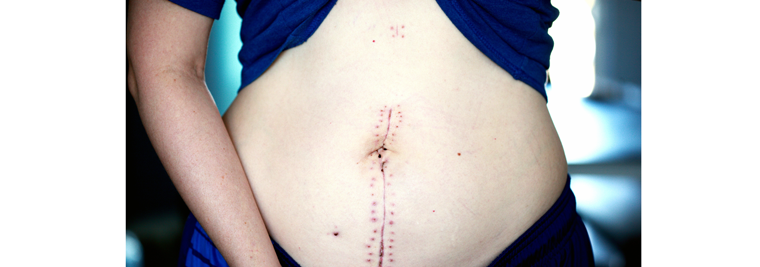Recently published research from MedStar Washington Hospital Center, MedStar Health Research Institute, Firefighters’ Burn and Surgical Research Laboratory, MedStar Georgetown University Hospital, and Georgetown University School of Medicine investigated the efficacy of lasers to minimize surgical scars when applied less than one month after operation. Laser scar therapies aim to treat undesirable results post operation. Prevention of visible scars is preferred over treatment, and studies examining the use of lase scar therapies at earlier stages have shown improved results.
The study “Effectiveness of Early Laser Treatment in Surgical Scar Minimization: A Systematic Review and Meta-analysis” examined previously published literature in order to evaluate the efficacy of laser modalities in minimizing the undesirable characteristics of primary closed full-thickness surgical scars less than one month after operation. The literature review encompassed 8 articles in the systematic review and 4 in the meta-analysis.
The primary outcome of the study was the quantitative statistical review of the available data generated from randomized controlled trials determining the efficacy of early laser therapies applied less than 1 month after operation to minimize surgical scars. Based on the data, the analysis showed statistically significant therapeutic effect (p < .05). Due to the nature of the research included in this analysis (a diverse set of applications and usage), this statistical finding can offer evidence for the use of laser modalities as a whole under this indication.
The secondary outcome was a qualitative review where the validity of most individual studies included were determined to be “fair”. However, half of the studies included in the statistical review received “good” ratings.
Within the analyzed studies, there were inconsistent conclusions of studies using pulsed-dye laser systems. This observation was based on the varied use of purpuric versus non-purpuric laser settings. Only non-purpuric settings have been found to be reliably effective, whereas purpuric settings have failed to show efficacy. The research team recommends the use of non-pupuric settings when treating early scars, as this method is also desirable to patients.
In summary, the ability of lasers to achieve significant improvement after one session is ideal, alleviating the burden of repeat visits and providing a cost-effective means of minimizing scars. However, multiple scar treatments are often recommended for optimal results. Most patients prefer early treatment, as the scars are more amendable to treatment instead of waiting until they are hard, thick, and difficult to penetrate. The outcome supports the efficacy of lasers in minimizing primarily closed surgical scars when treated less than one month after surgery.
The study team included Rhett A. Kent, MD, Jeffrey Shupp, MD, Stephen Fernandez, MPH, Nick Prindeze, BS; and Cynthia M.C. DeKlotz, MD.
Dermatologic Surgery, DOI: 10.1097/DSS.0000000000001887

